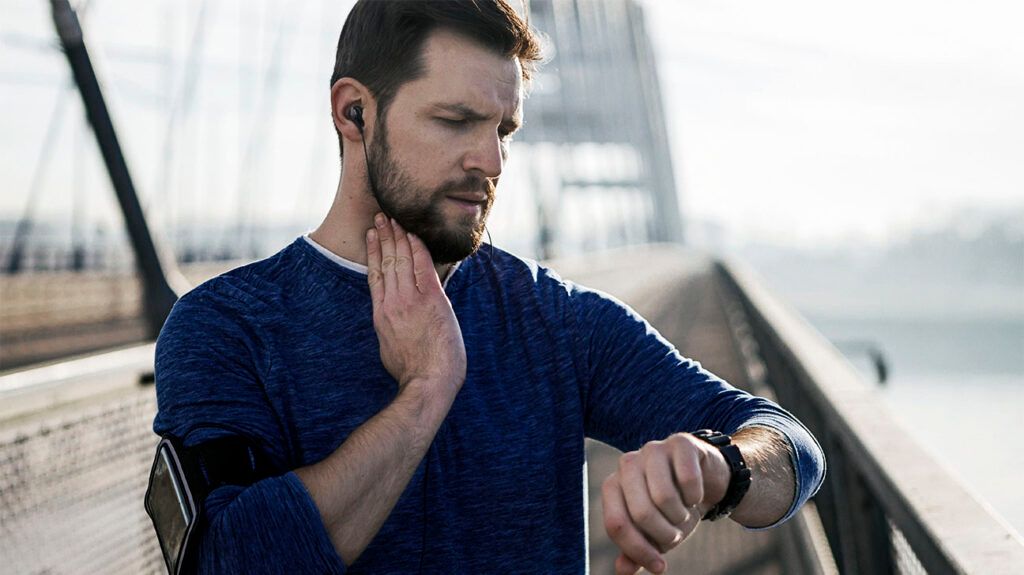When a person feels their pulse, they are feeling an artery expand. Checking the pulse is a way of measuring the heartbeat. Suitable places to take a pulse are on the wrist (radial pulse) or on the side of the neck.
The arteries run close to the skin in these areas.
An extremely slow pulse, known as bradycardia, can cause dizziness and shortness of breath and stem from certain heart conditions or medications. A pulse that is too quick, known as tachycardia, may be due to factors such as infection, stress, caffeine, or low blood pressure.
With practice, it is easy for someone to take their pulse and those of others.
This article explores the pulse, its importance, and the best way to find and measure it.
Fast facts on checking your pulse
- As the heart pumps, the arteries expand and contract. This is the pulse.
- The pulse is easiest to find on the wrist or neck.
- A healthy pulse is around 60 to 100 beats per minute (bpm).

Arteries run closely to the skin’s surface at the wrist and neck, making the pulse particularly easy to find at these points.
Here are the simple steps a person can follow to measure the pulse at the wrist. This is the radial pulse:
- Turn one hand over so it is palm-side up.
- Use the other hand to gently place two fingertips just below the fold of the wrist on the side of the thumb.
- When the position is right, you should feel the pulsation of your heartbeat.
A person can also find their pulse on the neck using two fingers in a similar way. They need to gently press into the soft groove on either side of the windpipe.
This is the pulse running through one of the carotid arteries, which are the main arteries running from the heart to the head.
More difficult places to find a pulse are:
- behind the knees
- on the inside of an elbow with an outstretched arm
- in the groin
- at the temple on the side of the head
- on the top of the inner side of the foot
The video below explains how to take a pulse:
The pulse involves the expansion of the arteries. This expansion stems from an increase in blood pressure pushing against the elastic walls of the arteries each time the heart beats.
These expansions rise and fall in time with the heart as it pumps the blood and then rests as it refills. The pulsations occur at certain points on the body where larger arteries run closer to the skin.
Once a person has found their pulse using the above advice, they need to hold still and perform the following steps:
- Use a timepiece or watch with a second hand or look at a clock with a second hand.
- Over the course of a minute or 30 seconds, count the number of beats.
- The standard heart rate measurement is the number of pulses per minute. A person can calculate it by doubling the number of pulses felt over 30 seconds.
- The pulse should be around 60 to 100 bpm.
The heart should beat steadily, with a regular gap between each contraction, so the pulse should also be steady.
Adults generally have a resting heart rate of 60 to 100 beats per minute (bpm). People with good physical fitness generally have slower heart rates than those who exercise less. Athletes, for instance, may have a resting heart rate of just 40 to 60 bpm.
However, it is natural for the heart rate to vary in response to movement, activity, exercise, anxiety, excitement, and fear.
If a person feels their heart is beating out of rhythm or at an unhealthy speed of under 40 bpm or over 120 bpm after checking with a pulse, they need to discuss this with a doctor.
An individual might also feel that their heart has missed or “skipped” a beat or that there has been an extra beat. An extra beat is an ectopic beat. Ectopic beats are very common, usually harmless, and do not need any treatment.
However, if there are concerns about palpitations or ectopic beats, a person needs to consult a doctor.
Hospitals use monitors that can check the heart rate and pulse. Heart rate monitors are available for home use and are also available online.
If a person uses a home monitor, they need to help ensure its accuracy by:
- checking that a doctor has validated it
- measuring the heart rate at the same time every day
- taking several readings and recording the results
A recent development is the wide range of products now available on the consumer market for personal health monitoring.
Numerous devices can connect to smartphone apps, and several health-monitoring wearables combine hardware and software in one device.
Devices that connect to mobile phone software apps are now available. Some home-use devices include both hardware and software. Some provide readings equivalent to those of an electrocardiogram (ECG) machine.
It is easy to measure a pulse, which can give a useful indication of a person’s state of health. The best places to check the pulse are on the wrist or the side of the neck. Adults generally have a resting heart rate of 60 to 100 beats per minute (bpm).
If a person has concerns regarding their heart rate, they need to consult a doctor.


